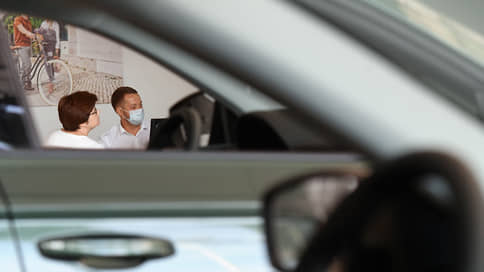The car market sorts out the engines of progress – Newspaper Kommersant No. 5 (7450) of 01/13/2023
[ad_1]

The car market enters 2023 amid supply and demand uncertainty, and its participants differ in their forecasts. The most positive expectations suggest an increase in sales by a quarter at once, while the negative ones are expected to decline due to the depletion of pre-crisis warehouses and the difficulties of supplying familiar brands through parallel imports. The passenger car segment will remain the most volatile, as it contracted more than commercial vehicles in 2022. The possibilities of recovery will depend on the rate of growth in the production of cars worth up to 2 million rubles in the Russian Federation, the deficit of which cannot be covered by imports.
In 2023, sales of new passenger cars will grow by 4%, to 650 thousand units, follows from the baseline forecast “Autostat”. The agency’s experts note that it is difficult to predict the results of the year in conditions of uncertainty, and assume that in the end the market will turn out to be in the range between 650 thousand units and an optimistic forecast of 780 thousand units (an increase of 25%). The Association of European Businesses, in turn, lays the growth of the market for new passenger cars and light commercial vehicles by 12%, up to 770 thousand cars.
Automotive expert Vladimir Bespalov gives a similar forecast – a recovery to about 800 thousand units. He notes that in the passenger segment, due to the large number of new assembly projects and difficulties with components, the risks of volatility are higher than in LCV, but in general he believes that they will recover at the same level.
Dmitry Babansky from SBS Consulting also expects that due to a deeper drop in sales of passenger cars, they may recover faster than LCVs, but in general, the pace will be comparable.
Yulia Ovchinnikova, development director of the Klyuchavto auto holding, expects a slight increase in the passenger car market, both new and used. She notes that dealers are actively replenishing warehouses, including through parallel imports, in addition, there is an active expansion of Chinese cars and the entry of “Russian novelties” into the market.
Director of Avilon. Used cars” Nikolai Baskakov adds that the supply of Chinese cars and parallel imports at the same time give an additional influx of used cars through trade-in, but the deficit in the used car market will continue. “Of course, the dynamics of the market will depend on the general economic situation, exchange rates, the number of cars in stock at dealers and consumer demand,” Ms. Ovchinnikova concludes, adding that the share of parallel imports in the market structure will grow.
The level of sales of new cars in 2023 will be primarily influenced by the general geopolitical situation: if there is no next wave of mobilization or other critical events, the segment of new cars will gradually recover, says Denis Migal, head of Fresh Auto.
“The rate of growth will be influenced by the dollar exchange rate: if it remains within the range of 60-75 rubles, then the process will go faster,” he adds.
Parallel imports will replenish stocks of premium and luxury cars, although they will cost more due to logistics and customs costs, Migal explains.
The mass segment will expand thanks to the activity of Chinese automakers – “most likely, in 2023 we will see the emergence of new lines of affordable sedans and crossovers from China.”
Sales in 2023 will be limited primarily by demand, Andrey Terlyukevich, CEO of Avtospetstsentr Group, believes. “The deficit remains only in the B- and C-segments: first of all, there are not enough sedans worth up to 2 million rubles. (Kia Rio, Hyundai Solaris, Renault Logan and others). High overhead costs associated with logistics and customs limit their import under the parallel import scheme,” he says. According to Avtostat, in December 2022, the share of parallel imports in sales was only 12%.
Aleksey Starikov, Deputy General Director for Sales of New Cars at Avilon, is sure that the shortage of new cars on the market will continue and dealers will not be able to fully satisfy demand even with the help of parallel imports. Prices will depend on the dynamics of the ruble exchange rate – its fall will mean an increase in prices, “moreover, current purchases are already at a higher price, which will lead to higher prices for new cars.”
In 2023, the market will remain at the level of the previous year due to the growth of AvtoVAZ production, the fulfillment of plans for the supply of cars of Chinese brands and the output of the assembly of localized brands to the declared level, says Mr. Terlyukevich.
He calls the gradual recovery of the market in the second half of the year with an increase of about 5% a “encouraging” scenario, and a further “degradation of demand due to a drop in household incomes” as a pessimistic one. The head of Avtodom, Andrey Olkhovsky, agrees that in volume terms, sales in 2023 will decrease due to low consumer demand and the lack of deliveries of “usual cars”. For half of 2022, cars were sold from importers’ warehouses, and this gave additional support to the market, he recalls, “this will not happen in 2023 – there will be Chinese brands and parallel imports, which do not generate large sales volumes.”
[ad_2]
Source link





